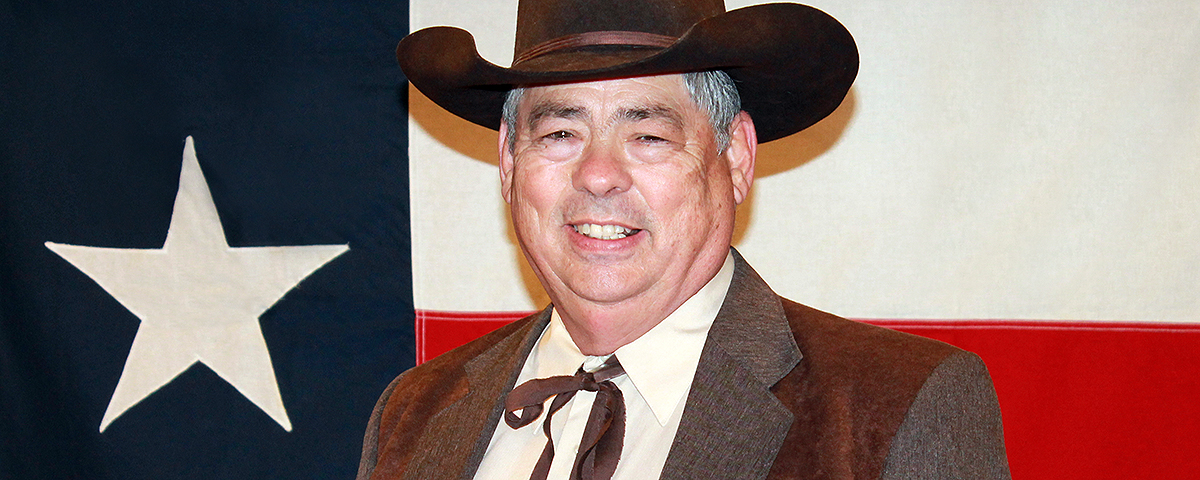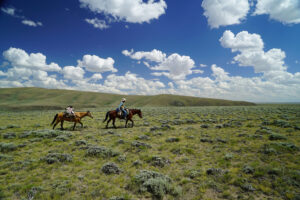Longtime Western historian Bill O’Neal keeps very busy. Appointed Texas state historian by Governor Rick Perry in 2012, O’Neal has taught at Panola College in Carthage since 1970 and blogs weekly [lonestarhistorian.blogspot.com and lonestarhistorian2.blogspot.com] about his revelations regarding Texas history. He has written more than 40 books, including Sam Houston: A Study in Leadership (2016) and the forthcoming Frontier Forts of West Texas, for Arcadia Publishing. O’Neal recently made room in his packed schedule to speak with Wild West.
What led you to write about Sam Houston?
In 2012, shortly after being appointed state historian, I was asked to present a lecture at the Bullock Texas State History Museum in Austin and was assigned the topic “Leadership Qualities of Sam Houston.” I’ve been fascinated by “Old Sam Jacinto” all of my life, and I lectured about him for more than 30 years in my Texas history classes at Panola College. So it was a pleasure to develop my ideas about Houston as a leader, and the audience response was so strong that I used the topic on other occasions. It was a particular thrill to deliver the keynote at the San Jacinto Monument on San Jacinto Day 2014. This was a subject that needed to be developed into a book.
What were his best qualities and worst flaws?
In combat Houston exhibited raw physical courage. He led from the front and suffered severe wounds leading charges at Horseshoe Bend and at San Jacinto. Sheer physical size is an asset for a military leader, and with his imposing physique Houston commanded instant respect from other soldiers. He was an extraordinary orator, a useful gift in both military and political leadership. Houston held powerful convictions, and he readily assumed responsibility for his actions. Although he made friends easily, when crossed, he would excoriate his adversaries ruthlessly, thus developing bitter enemies. And he drank heavily, a trait noticed by the public and proclaimed by his enemies.
What prompted your book on west Texas forts?
Texas has seen more combat, civilian as well as military, than any other state or territory. The U.S. Army built more forts in Texas than in any other state, but by the time we became a state, the conflicts between Anglo settlers and American Indians had ended in east Texas, and the military frontier had shifted westward. Many of these forts have been wonderfully preserved, while others are in ruins. But at all of these sites the 19th-century ghosts may be felt. In Texas the Army learned to utilize cavalry against horseback warriors, and “forts” were not fortified—they were military towns, bases from which to launch patrols and pursuits. The U.S. Camel Corps operated in Texas, and so did all four regiments of buffalo soldiers. There is a rich story to tell, and these photogenic old outposts [the book will feature some 200 photos] provide a great starting point for a writer.
Do you have a favorite West Texas outpost?
I’ve been traveling to these old forts for almost 60 years, and I love ’em all. But for 20 years I conducted a “Traveling Texas” history course twice per summer, covering 2,100 miles and including camping in Big Bend and the Davis Mountains. The students reacted most to sprawling Fort Davis, a regimental post superbly restored and maintained by the National Park Service. John Wayne, John Ford and their “cavalry trilogy” would have been right at home at Fort Davis.
‘My official status has opened many historical doors, including ones to the basements or attics of museums, where I get to see and handle great stuff not on public display’
What does being the state historian mean to you?
I was astounded when notified of my appointment. I’m in my second term now. I’m pretty much allowed to freelance, so I function as an ambassador for Texas history. I speak at historical events and for every type of group in the Lone Star State. It’s been one of the most delightful and meaningful gigs in my career as a historian.
So does being state historian open any doors?
My official status has opened many historical doors, including ones to the basements or attics of museums, where I get to see and handle great stuff not on public display.
Does any particular historic Texas figure stand out for you?
Old Sam Jacinto, of course. He truly is the iconic Texas figure of the 19th century, which is saying a lot, considering the ranchers, gunfighters, soldiers, war chiefs and other colorful types of that era.
What drew you to a career in Western history?
I fell in love with the Old West watching Western movies when I was growing up. I started reading history books about the real-life characters and events that were part of these films. By the time I was in college, I had a list of places I needed to visit, and I’ve been attacking that list for more than half a century. And since there was not a book on the Arizona Rangers, I wrote one. I’ve written many other books I wanted to read, and fewer than half of my books have been about Texas.
What about your sideline in baseball history?
I’ve been hooked on baseball since boyhood, and I grew up watching Texas League games. One of my early books was a centennial history of the Texas League, and that led to official league histories of four other minor leagues. At Cooperstown I was welcomed as the “King of the Bush Leagues.”
Is there a Western baseball history book in your future?
A long time ago I wrote a True West article on sports in the Old West, which certainly included base ball (two words in those days). I had a great time putting that together, and I toyed with doing the book you mentioned.
How do you light on your book topics?
If I want to read about a subject, and there’s no book, I try to fill in the gap. But I’ve also had publishers contact me and say they need a book on a certain subject. Publications International of Chicago had me write a series of coffee-table books about the Old West, and I’ve written four “subject” books (Texas Gunslingers, most recently) at the request of Arcadia.
Do you have a fixed writing process?
I have good work habits. Even at my busiest with college teaching I won’t go to bed until I’ve written at least 500 words, and on weekends I expect a couple of 1,000-word days. The words pile up pretty fast if you maintain a schedule. To avoid writer’s block, I’ll stop in midsentence or not complete a quote. The next day I finish the sentence or the quote, and I’m right back in the saddle. I realized early that I’m not a gifted writer, so I’ve worked very hard (armed with my trusty thesaurus) to become a good craftsman, a wordsmith who can produce a smooth read.
And your research process?
I always travel to the sites I’ll write about, taking photos and measurements and soaking up the atmosphere. At home, where my office is a converted two-car garage, I have several thousand volumes as well as filing cabinets, which serve as a research library for my favorite subjects. And my long association with a college has given me access, through interlibrary loans, to all manner of hard-to-find books.
Of the books you’ve written, which do you consider your best?
Cheyenne, 1867–1903: A Biography of the “Magic City” of the Old West (Eakin Press, 2006). I read Cheyenne daily newspapers over a 37-year span and gleaned a ton of information. During one trip to the city my wife and I stayed for two weeks, mining all kinds of sources. And I was inspired to write “biographies” of two other Wild West towns—Caldwell, Kansas, and Lampasas, Texas—during their formative periods.
What’s next for you?
I’ve been asked by a university press to write a book about my state historian travels around Texas, in sort of a Charles Kuralt manner. I’ll also use my blog to chronicle and illustrate my weekly Texas history adventures. MH
The staff of Wild West expresses its sorrow at the recent passing of Karon O’Neal, Bill’s avowed chief of staff and wife of 22 years. We will miss her bright soul at Western conferences the couple attended.





